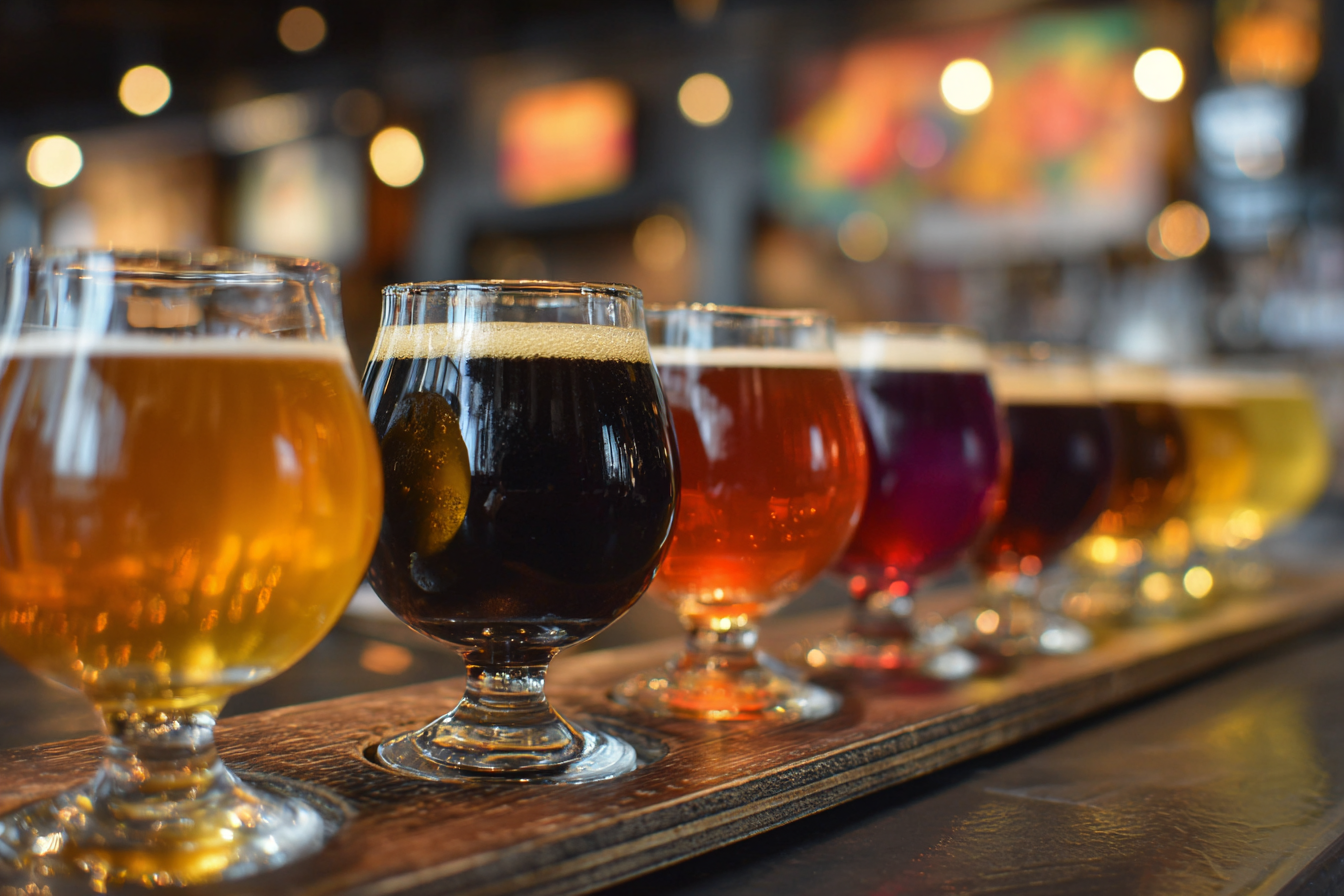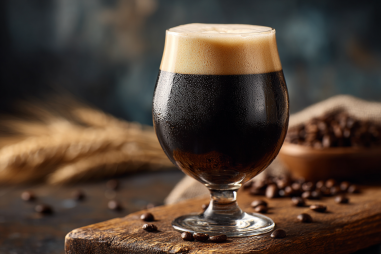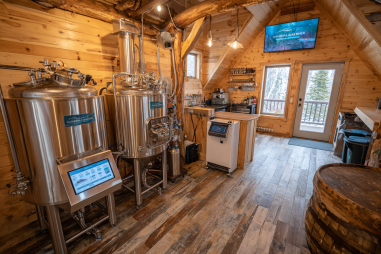If you’re a fan of craft beer and love exploring unique flavors, the Brett IPA is a style you should definitely get acquainted with. Unlike traditional IPAs, Brett IPAs feature Brettanomyces yeast, a game-changer that imparts distinctive funky, fruity, and tart characteristics. But Brett IPAs aren’t one-size-fits-all—brewers push the envelope by experimenting with numerous variations that bring new twists to this classic beer style. Let’s dive deep into the world of Brett IPA variation styles, unraveling what makes each unique and why they’re creating buzz in the craft beer community.
Understanding Brett IPA Base Characteristics
Before jumping into the variations, it’s important to set the foundation by understanding what defines a Brett IPA. At its core, a Brett IPA combines the hop-forward bitterness and aromatic qualities typical of India Pale Ales with the wild, complex fermentation character from Brettanomyces yeast. This unique yeast strain is known for producing flavors and aromas often described as funky, earthy, barnyard-like, and sometimes fruity or tart, setting Brett IPAs apart from their clean-fermented cousins.
In a Brett IPA, you’ll often find:
- Bright, assertive hop presence featuring citrus, pine, or tropical fruit notes
- A moderate to high bitterness level balancing malt sweetness
- A complex yeast-driven profile that adds layers of funkiness and slight acidity
- A medium body with a smooth to slightly dry finish
This balance between hops and wild yeast character makes Brett IPAs a unique playground for brewers to experiment and for drinkers to unpack new layers with each sip.
Popular Brett IPA Variation Styles
From dry hopping techniques to barrel aging, there are several exciting ways brewers put their own spin on Brett IPAs. Here are some key variations that have gained popularity:
Dry-Hopped Brett IPA
Dry hopping is a staple in many IPA styles, and when combined with Brettanomyces fermentation, it leads to a captivating bouquet of fresh hop aromas layered over funky yeast notes. In this variation, hops are added late in the brewing process or post-fermentation to maximize aroma and flavor without increasing bitterness. The resulting beer bursts with lively citrus, tropical, or resinous hop character perfectly offset by the wild yeast funk.
Barrel-Aged Brett IPA
Taking Brett IPAs to the next level, barrel aging introduces rich complexity through slow maturation in barrels, often previously used for wine, bourbon, or sour beers. This aging process imparts hints of vanilla, oak, tannins, and subtle oxidation while allowing the Brett yeast to develop deeper funk and acidity over time. Barrel-aged Brett IPAs tend to have a smoother, more rounded palate with a layered profile that craftspeople and connoisseurs relish.
Fruited Brett IPA
Adding fruit adjuncts to Brett IPAs brings another dimension of flavor and aroma. Common choices include stone fruits, berries, and citrus peels, which complement and interact with the Brett yeast’s natural fruitiness, enhancing tartness and aromatic complexity. The result is a lively beer that dances between funky and bright fruit flavors, often with a refreshing tart finish.
The Role of Different Brettanomyces Yeast Strains
One of the most fascinating aspects of Brett IPA variations lies in the diversity of Brettanomyces strains used. Not all Brett yeasts are created equal; each strain offers unique sensory characteristics and fermentation behaviors.
- Brettanomyces bruxellensis: This strain is known for its pronounced “barnyard” funk, spicy and leathery notes, often contributing a complex earthiness.
- Brettanomyces claussenii: Typically produces cleaner fermentation profiles with lighter fruitiness and less intense funk, great for subtle Brett effects.
- Brettanomyces lambicus: Famous for souring capabilities, it creates intensely tart and funky beers, often used in sour Brett IPAs.
By selecting specific strains or even blending them, brewers tailor the final beer’s funk intensity, tartness, and aromatic profile, offering an endless array of flavor possibilities.
Adjuncts and Unique Ingredients in Brett IPA Variations
Beyond yeast and hops, many brewers incorporate adjuncts—additional fermentable or flavoring ingredients—to elevate Brett IPAs further:
- Adjunct grains: Wheat, oats, and rye can be used to modify body, mouthfeel, and head retention.
- Spices and botanicals: Ingredients like coriander, orange peel, or even herbs enhance aroma and complexity.
- Fruit additions: Cherries, apricots, blackberries, or passionfruit complement the yeast’s fruitiness and brighten flavors.
- Honey or maple syrup: Sometimes used to add subtle sweetness and nuanced aromatics balancing funk and bitterness.
These adjuncts interact with the wild fermentation and hops to create beers that are uniquely expressive and sometimes surprising, inviting craft beer lovers on a sensory adventure.
How Aging Alters the Brett IPA Profile
Aging plays a transformative role, especially in Brett IPAs with their wild yeast nature. Over weeks and months:
- The Brett yeast gradually increases funk, developing deeper earthy, barnyard, and leather notes.
- Hop aromas can mellow or shift, sometimes becoming more resinous or subdued.
- The beer’s acidity may rise slightly, lending a balanced tartness.
- The mouthfeel may evolve to a smoother and sometimes drier finish.
Patience during aging can reward you with layers of complexity, turning a fresh, hop-forward beer into a sophisticated, nuanced brew. Barrel aging usually enhances this process by adding oak-derived flavors and mellowing sharp edges.
Tasting Notes for Brett IPA Variations
When tasting different Brett IPA variations, keep an eye (and palate) out for the following hallmarks:
- Dry-Hopped Brett IPA: Expect a powerful hop aroma combining citrus, pine, and tropical fruit with light Brett funkiness. The palate is usually crisp with moderate bitterness and a dry finish enriched by subtle wild yeast character.
- Barrel-Aged Brett IPA: Look for oak notes, vanilla, and sometimes slight tannins mingling with funky, leathery Brett flavors. The hop bitterness is often softened, balanced by smoothness and mild acidity.
- Fruited Brett IPA: Bright fruit aromas and flavors shine, complementing the Brett yeast’s tart and funky profile. These beers can range from pleasantly tart to mildly sour, depending on the fruit and yeast blend.
Remember, Brett IPAs can be unpredictable and evolving, so don’t hesitate to revisit tastes over time or alongside food pairings like sharp cheeses, grilled meats, or spicy dishes.
Tips for Trying and Brewing Brett IPA Variations
If you’re interested in exploring Brett IPA variations yourself, here are some handy tips to enhance your experience as both a drinker and homebrewer:
- For tasters: Try freshest possible beers with clear labeling of Brett yeast strain and aging to appreciate their unique profiles. Attend tap takeovers, festivals, and brewery tours specializing in wild and sour beers.
- For brewers: Be patient when working with Brett yeast—fermentation runs longer and requires precise sanitation to avoid contamination. Experiment with dry hopping timing to balance freshness and funk. Consider combining multiple Brett strains or co-pitching with Saccharomyces for varied complexity.
- When aging: Store beers in a cool, dark place and taste periodically to understand how flavors evolve. Use neutral or complementary barrels for aging to avoid overpowering the Brett character.
Diving into Brett IPA variations promises a unique, evolving sensory journey that highlights the artistry of craft brewing and the magic of wild yeast.
Embracing the Diversity of Brett IPAs
Brett IPAs are more than just a wild twist on a familiar style—they are a celebration of creativity, innovation, and the bold spirit of craft beer. From hop-centric dry-hopped versions to richly complex barrel-aged concoctions and bright fruited variants, each Brett IPA variation offers a distinctive flavor story shaped by yeast, fermentation, ingredients, and aging.
Whether you’re a devoted IPA lover wanting to explore funkier notes or a brewer eager to experiment with wild yeast, Brett IPAs open the door to a diverse and exciting universe. So next time you spot a Brett IPA on tap or on the shelf, remember you’re not just enjoying a beer—you’re savoring a living, evolving craft experience.







